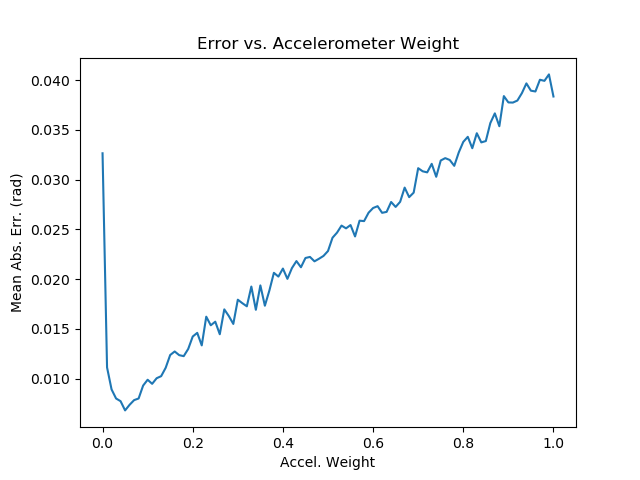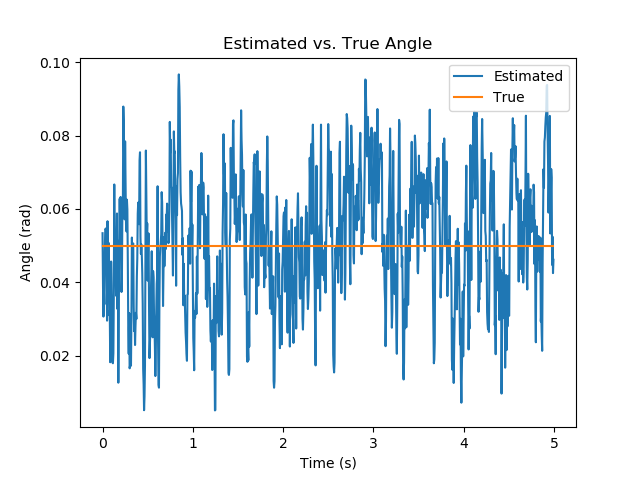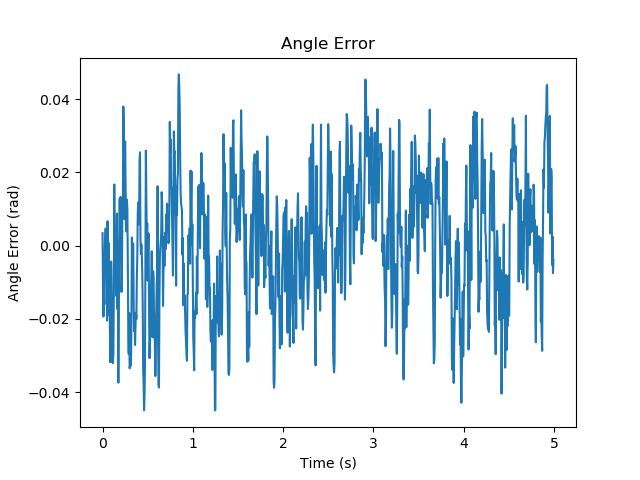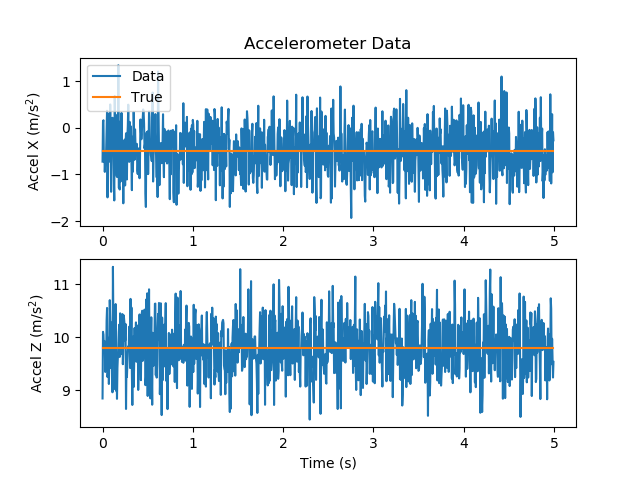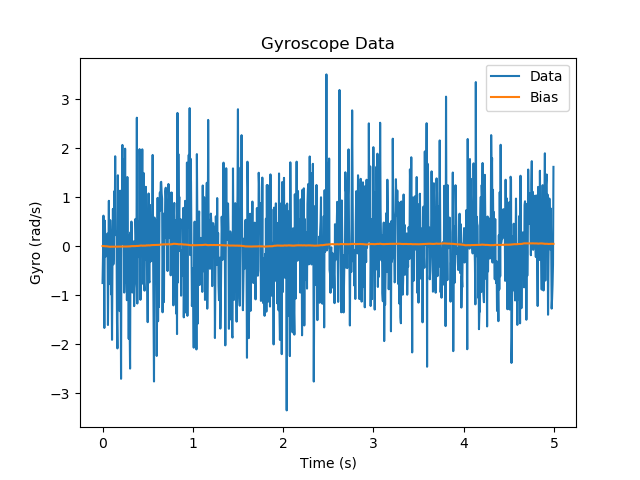This implements a 2D complementary attitude filter for the purposes of analyzing how accelerometer and gyroscope noise affects attitude estimate accuracy.
Supports
- Gaussian accelerometer noise
- Gaussian gyroscope noise
- Brownian motion gyroscope bias drift
Run python main.py --help to see a list of available parameters and their default values.
Run python param_tune.py to see a plot of attitude error vs. accelerometer weight.
Here we attempt to find the best value of the accelerometer weight by plotting the error for a series of values.
Keep in mind that the best value will depend heavily on the noise properties of the accelerometer and gyroscope data.
We see that the best value of the accelerometer weight is somewhere around 0.05. The sweep can be refined by searching over more values as well as computing standard deviations of the error for each parameter value.
python main.py --gyro-stddev 0.01 --accel-stddev-x 0.01 --accel-stddev-z 0.01
Mean abs error is 0.000424 radians (0.024310 degrees)python main.py --gyro-stddev 1.0 --accel-stddev-x 0.01 --accel-stddev-z 0.01
Mean abs error is 0.004991 radians (0.285978 degrees)python main.py --gyro-stddev 0.01 --accel-stddev-x 0.5 --accel-stddev-z 0.5
Mean abs error is 0.013562 radians (0.777072 degrees)python main.py --gyro-stddev 1.0 --accel-stddev-x 0.5 --accel-stddev-z 0.5
Mean abs error is 0.014568 radians (0.834661 degrees)These results suggest that gyroscope additive noise has a much lower effect on attitude error than accelerometer additive noise, likely because all gyroscope measurements are multiplied by the sampling time (dt).
